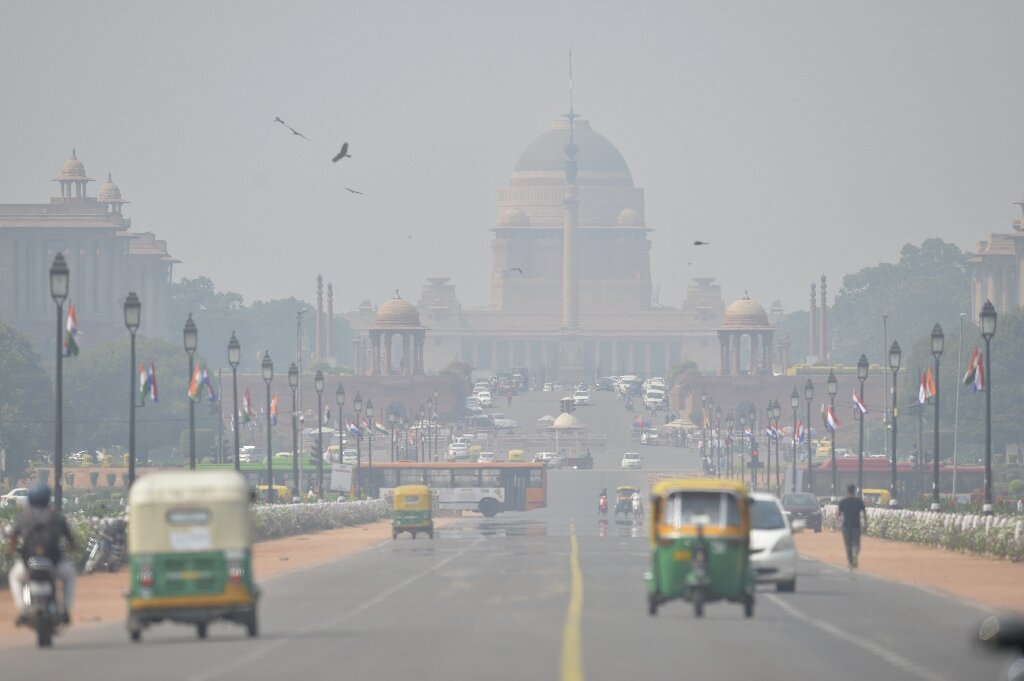NEW DELHI, March 22: As many as 63 cities of India figure in the list of first 100 as the most polluted cities in the world. The first 50 such cities include 35 from India and worst still, the first 20 such cities include 14 from India, four from Pakistan and two from China.
Recently in another international report, India was placed 139th out of the 149 countries in the world on the happiness index from the bottom. However, prime minister Narendra Modi was adjudged the most popular leader in the world.
India’s air pollution worsened in 2021, according to the World Air Quality Report released by IQAir, a Swiss firm. This ends a three-year trend of improving air quality. The average air pollution, measured in the lethal and microscopic PM2.5 pollutant, is 58.1 micrograms per cubic meter, which is more than 10 times the World Health Organisation’s (WHO) air quality guidelines. No city in India met the WHO standard.
North India is worse. Delhi is the world’s most polluted capital for the fourth consecutive year, with pollution rising almost 15 per cent over the previous year. Air pollution levels here were almost 20 times above the WHO’s safety limits, with PM2.5 clocking in at 96.4 micrograms per cubic meter for the annual average. The safe limit is 5.
While Delhi’s air pollution ranks at No. 4 globally, the world’s most polluted place is Rajasthan’s Bhiwadi, followed by Uttar Pradesh’s Ghaziabad on Delhi’s eastern border. Ten of the top 15 most polluted cities are in India and mostly around the national capital.
With 63, Indian cities dominate the list of 100 most polluted places. More than half are in Haryana and Uttar Pradesh. An Air Quality Life Index developed by the University of Chicago shows that residents in Delhi and Lucknow, for instance, could add about a decade to their life expectancy if air quality levels met the WHO’s standards.
The major sources of air pollution include vehicular emissions, coal-fired power plants, industrial waste, biomass combustion for cooking and the construction sector. In fact, in November last year, several large power plants around Delhi as well as many industries were shut down for the first time because of severe levels of air pollution. The economic cost of the crisis to India is estimated at over $150 billion annually. The health impact is far worse with an estimated three deaths every minute linked to air pollution in addition to heart and lung diseases and many other severe health effects.
Interestingly, government data for 2021 also showed that air quality in Delhi, Kolkata and Mumbai worsened. A report submitted in Parliament recently showed that ‘poor’ to ‘severe’ air quality days numbered 168 in Delhi last year, up from 139 or a steep 21 per cent jump in one year; Kolkata had 83 such days vs 74 and Mumbai 39 vs 20 in the previous year.
However, when asked about India’s poor showing in an earlier edition of the World Air Quality Report in 2020, the centre had dismissed such rankings saying it was mainly based on satellite and other secondary data not validated by “proper ground truthing.” IQAir, however, refute the claim and maintained its data was based “exclusively” on ground sensors and almost half globally were operated by governmental agencies.
The report makes a special mention about smoke from crop-burning after the rice harvest, a politically sensitive issue with parties usually reticent about taking action against farmers. This smoke is responsible for up to 45 per cent of pollution in Delhi, especially in the rice farms near Delhi in winter months, according to the report. Farmers do this because of a short window between the harvest and sowing of the next crop to get rid of the stubble.
The IQAir report notes that air quality in China continued to improve in 2021. In fact, its capital Beijing continued a five-year trend of improved air quality, which the report says is driven by emission control and reduction of coal power plant activity and other high-emission industries. Incidentally, the cleanest air measured in India is in Ariyalur, Tamil Nadu. But even that is three times WHO’s safe levels.
Following are the 20 most polluted cities in the world:
The IQAir report, published after a survey of pollution data in 6,475 cities across the world, also revealed that not a single country managed to meet the World Health Organization’s (WHO) air quality standard in 2021, and smog even rebounded in some regions after a COVID-related dip.
(Manas Dasgupta)

